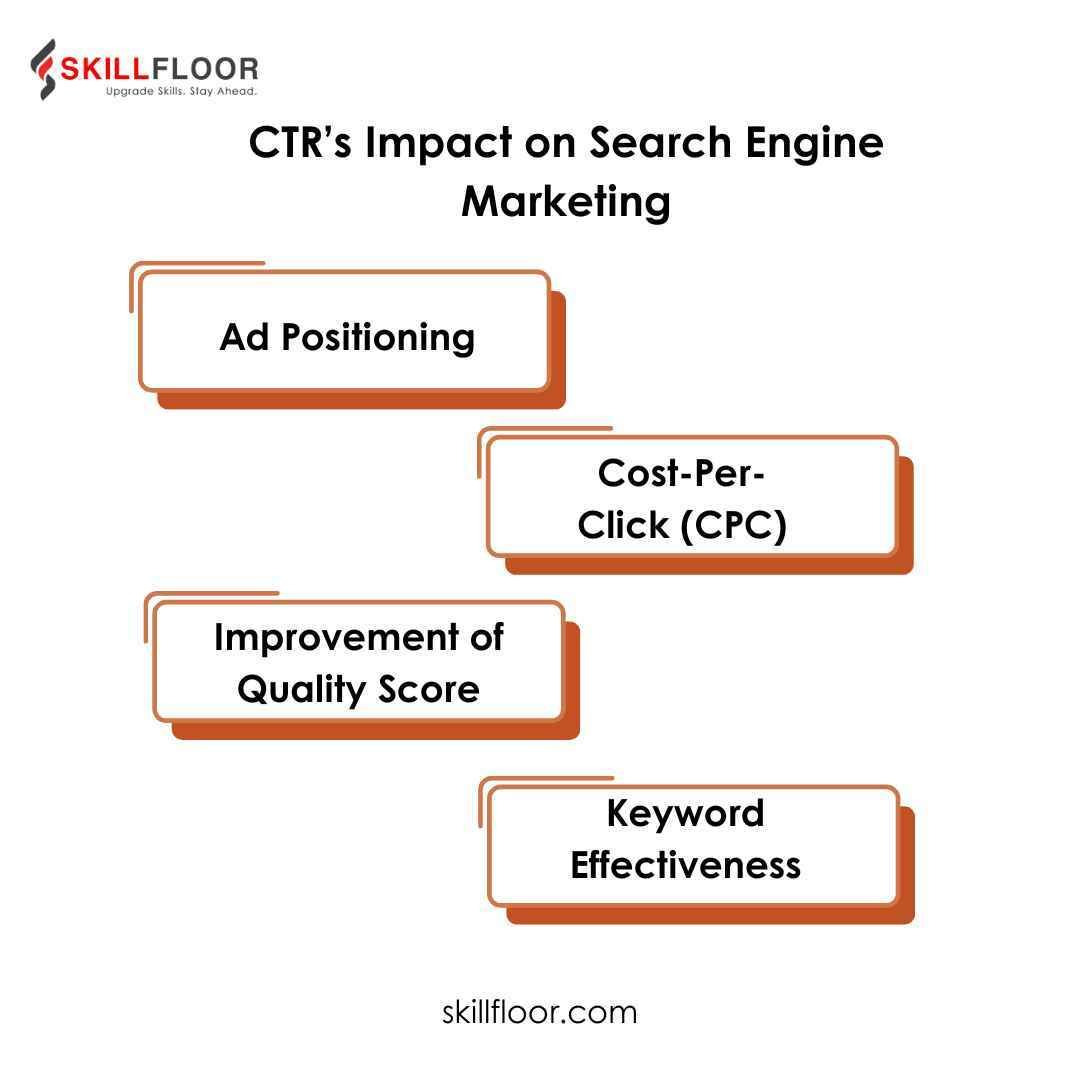Why Click-Through Rate Matters in Digital Marketing
Understand why click-through rate (CTR) is crucial in digital marketing. Learn how optimizing CTR can enhance your online campaigns and drive better results.

Any successful campaign in the world of digital marketing needs an understanding of the significance of click-through rate, or CTR. Knowing why click-through rate matters in digital marketing can help you create content, optimize your website, and run advertising more effectively. Indicating the frequency with which viewers click on an advertisement or link after viewing it, CTR is an essential indicator of the relevance and engagement of your content. A high click-through rate indicates that more prospective clients are aware of your service; inversely, a low click-through rate implies that your targeting or messaging may need some work. You may maximize your marketing efforts and raise audience engagement by concentrating on increasing your click-through rate, which will lead to greater results. Let's analyze why Click-Through rate matters in digital marketing.
What is the Click-Through rate (CTR)?
CTR, or click-through rate, is a fundamental measure used to evaluate how well digital marketing campaigns are working. To figure out the percentage, divide the total number of clicks on an advertisement or link by the total number of impressions, then multiply the result by 100.
CTR Formula:
CTR=(Number of Clicks/Number of Impressions)×100
For example, if your ad receives 1000 impressions and 50 clicks, the CTR would be 5%. This metric provides insights into how compelling your content or advertisement is to your audience.
Importance of CTR in Digital Marketing
CTR plays a crucial role in digital marketing for several reasons:
-
CTR, or click-through rate: It is an important statistic in digital marketing. It displays the effectiveness of your content or advertisements. It's fantastic that a high CTR indicates a large number of individuals are clicking on your ads. A low CTR may indicate that your strategy has to be adjusted.
-
Cost-effectiveness: Websites such as Google Ads and Facebook Ads base their ad prices on your click-through rate (CTR). You can save money by reducing your cost per click with a higher CTR.
-
Engagement of the Audience: A high CTR indicates that readers enjoy your material and are eager to see more. It demonstrates how fascinating and engaging your content is.
-
Quality Score: In search engine marketing, a high click-through rate (CTR) raises the visibility of your ads and can cut expenses. Your advertisements work better for less money if they have a higher quality score.
-
Benchmarking Success: You may determine which of your campaigns are effective by monitoring your CTR. It helps in the gradual improvement of your techniques.
The Role of CTR in Measuring Campaign Success
CTR is a measure of a campaign's effectiveness rather than just a number. This is the reason why:
User Intent Information: CTR offers information on user intent. Users that click on your advertisement or link are interested in what you have to offer, which suggests that your targeting and messaging are effective.
Conversion Correlation: Although higher CTRs don't always translate into higher conversion rates, they do frequently correspond with them. Because clicking increases the probability of continued engagement, click-through rate (CTR) before conversions.
Campaign Feedback: A continually low CTR may indicate that you need to make changes to your campaign, such as better targeting, more creativity, or stronger calls to action.
Comparative Analysis: By comparing various campaigns or ad groups, CTR makes it possible to pinpoint the best components and strategies.
CTR’s Impact on Search Engine Marketing (SEM)
A high Click-Through rate (CTR) in search engine marketing (SEM) raises the quality score of your ad, which results in better ad positions and cheaper click-through rates. When your ads have a high click-through rate (CTR), search engines will rank them higher since they are interesting and relevant.

-
Ad Positioning: CTR is a factor used by platforms such as Google Ads to determine ad rank. Higher CTR ads are probably going to appear higher on search results pages, which will increase their visibility and possibly lead to clicks.
-
Cost-Per-Click (CPC): Lower CPCs may result from higher CTRs. This is so that search engines will reward you with cheaper click-through rates since they see high CTRs as an indication of relevancy.
-
Improvement of Quality Score: CTR plays a significant role in determining the Quality Score of Google Ads. Strong CTRs and high quality scores can lower expenses and improve ad performance.
-
Keyword Effectiveness: The click-through rate (CTR) is a useful metric for assessing a keyword's effectiveness. Prioritizing keywords with higher CTRs in your approach makes sense because they are more efficient at generating traffic.
Enhancing CTR through Effective Strategies
It takes both creative execution and strategic planning to increase your CTR. These are some efficient methods to increase your CTR in digital marketing:
-
Compelling Headlines: Craft attention-grabbing headlines that align with the interests of your target audience. A strong title can significantly impact your click-through rate.
-
Targeted Ad Copy: Make use of language that directly addresses the issues and demands of your target audience. Make sure the benefits or solutions in your advertisement copy are obvious.
-
Strong Call-to-Action (CTA): To promote clicks, use obvious CTAs like "Learn More," "Get Started," or "Shop Now."
-
A/B testing: Determine which of your advertising or content works best by testing multiple iterations. Try several headlines, picture captions, and call-to-actions to see what works best.
-
High-quality visuals: To draw attention, use sharp, high-quality pictures and videos. Clicks on visual material are more common.
-
Mobile Optimization: Make sure your websites and advertisements are optimized for mobile devices. A mobile-friendly design can increase CTR because many consumers are using their phones.
-
Personalization: Adapt your material to each user specifically. Personalized communications have greater CTRs and are often more engaging.
-
Relevance and Alignment: Create consistent landing pages and advertisements. Users are more inclined to click and remain engaged when your advertisement and landing page are in alignment.
Tracking and Analyzing CTR for Continuous Improvement
It's important to regularly monitor and evaluate this data point in order to get the most out of CTR. Here's how to do it:
Use Analytics Tools: You may monitor your CTR by using tools like Facebook Insights and Google Analytics. They demonstrate the effectiveness of your campaigns.
Set Benchmarks: To gauge your success, set targets for your CTR and assess your performance against industry averages and historical data.
Identify Patterns: Examine what aspects of your marketing are most successful. Discover which keywords, advertising, or click-through tactics are most popular.
Adjust and Optimize: Make campaign adjustments based on your data. Try varying the targeting, images, or ad copy to see what increases your CTR.
Reporting on a Regular Basis: Generate reports to monitor your CTR over time. This enables you to track improvements, identify patterns, and demonstrate your advancement to others.
understanding and optimizing Click-Through rate (CTR) is essential for boosting engagement and campaign success in the ever-changing world of digital marketing. Advertisers can increase ad performance, reduce expenses, and establish stronger audience connections by concentrating on techniques that raise CTR.






























































